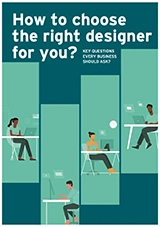Customer Perceived Value
What would you pay for a pair of jeans? £30, £80, £200? Have you been browsing and found a t-shirt on sale for £100 or more – How do you react?
Your individual reaction will be informed by many factors. Perhaps it’s “What a rip-off! Who would even buy that?”. Or maybe “I love it, I’m getting it”.
What governs these differing reactions and our perception of value?
In 2020, Gucci started selling pre-ripped tights, for £145, and they sold out! They don’t look significantly different to how a £5 tight might look after a good night out – but for some customers, the Gucci label carries significant value – as does the idea of being at the forefront of fashion.
Luxury brands command high prices because customers perceive them as high-value, glamorous, and having premium quality. That perception is driven by many factors.
In this article, we’ll explore some of the complexities of customer-perceived value and how brands achieve that positioning in their customers’ minds.
What does customer-perceived value even mean?
Well, in the simplest terms, it means you get to charge more for your product or service because your customer believes it’s worth the price. And that belief is defined by what your customers derive from your product or service.
Investopedia defines it this way: “perceived value is the customers’ evaluation of the merits of a product or service, and its ability to meet their needs and expectations, especially in comparison with its peers.”
If you’re into maths, this is the basic formula: Customer Perceived Value = Total Perceived Benefits – Total Perceived Costs.
The formula suggests perceived value is simply the pros outweighing the cons, in the minds of your customer. Which is pretty straightforward. But it if it’s that simple it begs the question: “How can I influence my customers’ thinking?”
We all know that repeat business is good business. We all want to develop customer loyalty and to have them keep coming back for more.
The simplest way to achieve that is to ensure they get value out of their experience of dealing with you, your product or your service. The business world refers to this most often as ‘value pricing’. The key to successful value pricing is to match the product/service with the consumer’s perception of value.
If you are buying a fashion item that is likely to be out of style next season then, for most people, there is likely to be a price ceiling they are willing to pay. Which will be largely dictated by personal financial circumstances.
However, if you are looking to buy a waterproof coat to go hiking (assuming fashion is not a criteria) that will last many years – and which has a no-questions-asked lifetime guarantee, then in all likelihood you will accept a much higher price point.
The basic computation has other variables too. Buying items that are expected to last, but that would only need to be used a few times a year (eg. a drill) then a mid-range price point is where most consumers land.
We’re unlikely to pick the cheapest model on offer because we tend to assume cheap equates to poor quality. A keen handyman might pay a little more trying to balance cost and quality. But a professional builder, who will use that drill several times a day, every day, will look for a top-quality item that they can rely on. They are likely to opt for the premium product – and stick to a brand they know and trust too. This proves there is much more to customer-perceived value than just price point alone.
TOMS shoes is a prime example. Shoes are a highly commoditised product. But people bought into the TOMS stated mission: “TOMS is in business to improve lives with every pair of shoes. Shop with confidence knowing that for every $3 we make, we give $1 away.” Their customers liked the thought they they were making the world a better place – whilst also getting the shoes they wanted. TOMS made millions of dollars by giving back to people in need.
The same values and mission buy-in happens repeatedly with customers aligning themselves with brands. Be it people who decide which products to use based on environmental sustainability, to ethical investment and pension funds. Our decisions to align with companies and products have three basic driving forces: Physical benefits, Logical benefits and Emotional benefits.
1. Physical benefits
This is the practicality of a product. Does it do what it says it does, in the way it says, to the standard I need? Does it deliver on its promise? Consistently.
2. Logical benefits
Logical benefits. As the term suggests these are more intellectual in nature. Think back to our drill – the logical benefit to the builder of paying more for a machine that they know they can trust and will last, is obvious. The drill still “just makes wholes” – as would the cheaper options, but there are other logical criteria that affect the purchase decision.
3. Emotional benefits
These are the benefits that can be hardest to evaluate. The emotional impact on your customers and how it makes them feel is not easy to measure. But these can be the most potent to make your customers keep coming back for more.
There’s a famous marketing example that is about “People don’t buy a drill, they buy the hole.” Our builder buy a drill that he knows will work and deliver – but what he needs is the hole that drill makes.
Imagine you owned a very rare Rolex watch. The emotional connection to that watch will be different depending on your own circumstances. It could be a family heirloom that has been passed through several generations and you now view yourself not so much as its owner but as its guardian. Keeping it safe for future generations.
Maybe, you are a self-made millionaire and this watch was the thing you promised yourself on reaching your first million. It would represent more to you than its actual monetary value, and a whole lot more than its operational value – which has most likely been replaced by the clock and alarm functions on your smartphone.
If Rolex (or similar brands) are quite common in your social world then maybe it is more of a ‘badge of belonging’. Its an emblem of being part of the tribe.
Alternatively, if you somehow, unexpectedly inherited one but it was well outside your usual life experience and you’d previously never even expected to ever hold a Rolex. Then you are likely to be too afraid to wear it. Possibly you’d simply sell it as the money would be of more use to you than the stress of owning, insuring and protecting such an item would be for you.
In short. Our responses are very individual and dependant on many factors, but in terms of building a perceived value, if you know our target audience well enough, and understand their motivations, we will be able to compel their attention.
For example, as with our Rolex, there is usually a certain pride and even joy in owning, and using, a premium product.
Bespoke, customised and exclusive products are particularly revered – and so deliver the emotional benefit I referred to earlier.
Designer items and rare finds, that can’t be found in every other fast-fashion store, carry a premium.
Nike famously allowed customers the ability to customise and ensure no other person could own the same trainers, by allowing people to apply their own colours and external pattern designs but at a premium cost.
How can you improve your Customer-Perceived Value?
Know your audience — Choose it wisely and nurture it.
Market research and knowing your audience well is what will help you drive sales. Knowing how they think, what they value, what factors or daily stresses for them. The more you understand and can empathise with your target audience the more of a connection you will be able to build. Immersing yourself in ‘the tribe’ that constitutes your customer base is always a good thing to spend time on. How can you make life a little easier, a little better? What are their motivations?
Harley-Davidson does not start the conversation with their audience by speaking about the engineering of their bike. They don’t talk about the economy of the fuel consumption, the comfort of the ride and how the angle of the wheel rank affects handling.
Such things have no emotional connection. Harley does speak about the open road, they appeal to the free spirit and rebel. They sell the American dream and, most importantly, freedom.
Just look at some of the slogans they have used:
Live to ride, ride to live.
It’s not the destination, it’s the journey.
American by choice. Rebel by birth.
The road starts here. It never ends.
The legend rolls on.
They know these are the messages that resonate with their customers – even if the actual demographics Harley-Davidson said its average rider is a 48 year old, white, male.
Get to know your customers’ value perception
When I was growing up we didn’t take trips abroad. If we went on holiday it was a camping trip somewhere in the UK.
As I got older and started working I did start to travel more. I did a few city breaks. Cultural holidays. I canoed down the Ardeche Valley and other activity holidays.
But then as life got more hectic and more stressful, and as I got older still my requirements of a holiday shifted again. I never used to want to sit on a beach or by a pool – I got bored too quickly.
Now having time to just relax, read and be with loved ones has become what I do want from a holiday. I still need a certain level of activity but I also want downtime. It’s the relaxation that draws me. The perceived value of the sun-drenched, paradise island, for me, lies in what I associate it with that type of break: peace, quiet, and relaxation. The ability to step away from the stress and busyness of life!
Study your audience, dig deep, and find out what’s important to them … and keep doing that, as those important factors may change as their own situation changes over time.
You can’t please everyone.
A truly unique item, product or service is VERY rare. In most areas of business, we find a vast array of options and a plethora and choices – enough to fit every pocket and every customer profile.
That vast selection of options should not discourage us. It is, in fact, a reflection of the need to be as specific as possible when targeting your audience. Instead of trying to please everyone we should aim our offering at a well-defined group.
How you can increase customer perceived value
There are lots of things that can increase customer perceived value.
Even though offering quality products is important – if it’s not fit for purpose then you have no hope of building a client base. But consumers weigh up other factors too. They will also pay for convenience. They do want the best possible product for the least amount of money but they also want it to be delivered yesterday.
This brings us to three variables of perceived value:
• product
• price
• convenience
Product is straightforward: Do people want it, if so then make it the best you can because people want quality products.
Price is something we’ve already touched on — quite simply the higher the perceived value of a product, the higher you can price your products.
Convenience, however, needs some special attention. We should always try to make every customer interaction with your business as frictionless and easy as possible.
That means every possible touchpoint with your business, from the initial interaction on a sales call, through delivery, to after-sales care. The same quality of service and customer focus should be present.
I recently heard a story of someone who had faulty Bluetooth earphones.
The gent in question is a muso and quite particular about the quality of his listening experience. He also travels a lot, so he invested in some Bose in-ear headphones. He figured the price was worth the cost as he trusted the brand, knew the sound quality was good and had checked out that they had received glowing customer reviews. So he bought his chosen headphones at the duty-free shop on one of his trips.
Sometime later one of the earpieces was not working. It wouldn’t hold a connection on Bluetooth. In a different airport, with time to kill before his flight, he found the Bose store and presented the earphones. Ten minutes later he left the store with a brand new pair, delighted that the issue had been resolved so easily and without further cost to him. Almost effortlessly on his part.
I’m not sure if this is normal Bose policy – but I can tell you that they now have a customer who will happily do repeat businesses with them and who has become a fan. He tells people about the incredible service. He is heralding the brand experience and customer service to anyone who cares to listen.
Being customer-focused pays dividends. Start by explaining why what you offer is a good fit for them. Given them easy access to reviews and testimonials from satisfied customers. People don’t want to spend more time researching than is necessary, so give them all they need about the product in one place and easy to find. Build your website with the customer journey in mind. Design your online & physical store likewise.
The easier it is for the customers to navigate your physical or online store, the more likely they are to come back. More return customers mean more sales, which also translates into better brand recognition.
Building “know, like & trust” with your customer is the aspiration of any good brand, – then improved brand recognition and reputation will also equate to more sales.
Customers will always compare your product, your brand, and the convenience of dealing with you as opposed to your competitors. Even if they’re not doing full-on research, they do unconsciously make comparisons: it’s simply an automatic process of our modern consumer lifestyles.
Work on your brand
How else will consumers recognize you and know you’re the company that delivers the value they’re looking for? To check out how other companies (especially your competitors) deliver value. Evaluate what you do against them – not just to be at a comparable level but to exceed what others are doing. Make sure every interaction and customer touchpoint reflects the standards and values you want to stand for.
Pay attention to your online presence and the vibe and feeling your social media and website leave visitors and followers with. On the “about us” page give them insight into the brand story, and let your customers know what your values are and why they are important to you. Give them a reason to care.
Rethink your price tag
Setting prices is often the one thing business people confess to being most stressed about. Can you price yourselves out the market? Or devalue what you do to the point that potential customers cease to believe you can deliver at that price point!
Experimenting with pricing is fairly normal. When trying to figure out the price tags, consider round numbers.
Generally, there are two approaches to pricing. Rounded or non-rounded prices:
• Non-rounded prices use decimals, like £12.99 or £3.75. Traditionally, they’re used to give the buyer the illusion of affordability. Some people say they feel it’s a more honest approach especially when buying items that the price ‘looks geniune’ as it’s a random figure £4.03
• With rounded prices, it’s a whole number. £4.00, £400.00. The rounded price is often associated with the feeling of luxury – and some argue that it looks more solid.
Chanel opts for rounded prices, but they have chosen to not even state the figures after the decimal. Instead of adding the decimal point, Chanel keeps things clean and simple. If you can afford Chanel then it’s a transaction calculated in folding money, not coins.
Having a rounded price, whether it has a decimal point or not, makes the product listings look cleaner and smoother than one that’s loaded with .99’s.
Think about whether you want your products to feel more luxurious or more affordable. If you’ve created high perceived value for your audience, then they should not hold them back from making a purchase.
You may have noticed that more luxurious brands and some restaurants have stopped using currency signs (eg. £) and simply state a number.
It’s 120. 120 what? this approach assumes knowledge – and it assumes that 120 is not a problem.
Better to aim high — there’s room at the top
If you have doubts about hitting a price ceiling then think back to the ripped Gucci tights. Someone is willing to pay £145 for a wild-night look.
Perceived value is more about the customer and their reaction, rather than the product itself.
Every business should aim to build the price perception of their products. Creating that value for customers, and that value in their minds is a prime concern for any brand manager and should be near the top of any business’s priority list.
Finally, remember that all the big brands started out small. We all have to start somewhere – and we can be sure we’ll snag a few tights or rip a few pairs of jeans on the way.






